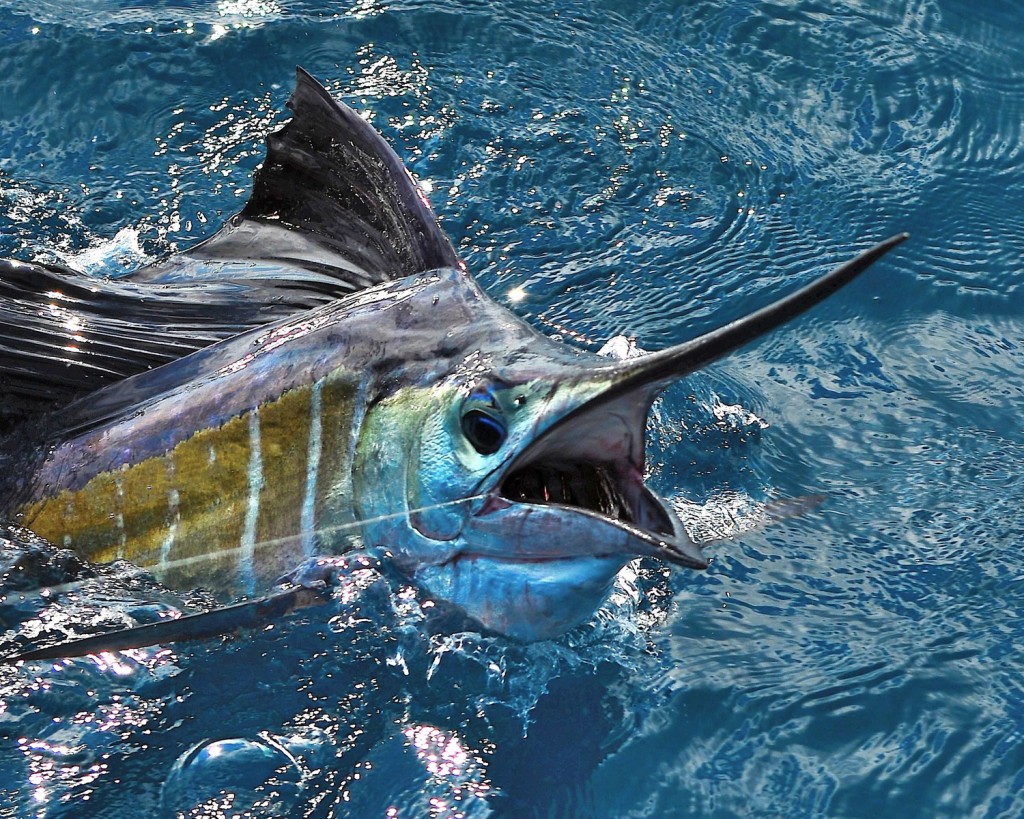Sailfish: Fastest Fish In The Ocean
Just from studying the cut of a sailfish‘s jib you can tell it’s a speed freak. From slender pointed schnozz to elongated tail, the sailfish is a lean, mean swimming machine.
Sailfish grow up to 3 m (9.8 ft) in length, they weigh a maximum of 90 kg (200 lb) and are considered by many to be the fastest creature in the ocean. They’ve been observed hitting 110 km/h (68 mph), which to be quite honest with you is nothing short of miraculous. Humans, despite having lovely thin air around us can’t be expected to achieve even a quarter of that; yet these ridiculously muscular fish can rip through water, which is about 750 times more dense than air, at close to the UK’s motorway speed limit. Phenomenal really isn’t an over statement.
When focused on a quick run the sailfish lowers its masts and powers through. It only raises its sail when excited or threatened to help it appear bigger than it really is. The fish also seems to use its fin as a distraction when a group of them are attempting to herd a shoal of squid or fish.
The sailfish (Istiophorus platypterus) is found in most of the world’s warmer oceans and has become the holy grail of fishermen, despite not being particularly nice to eat. They’ve got more fight than the Ultimate Warrior and can dash 100 m in under 5 seconds.
Another strange feature of the sailfish is its ability to change colour under the control of its central nervous system. It can do so almost instantaneously to fool both predator and prey.
The good news is, they aren’t endangered either. Virtually all of the interesting critters I’ve written about are at least on the decline, if not on their way out. But the sailfish seems to be stable, there’s not much in the sea that will take one down with ease and even the most voracious predator on earth (us) doesn’t have much luck catching them. It’s a good job their meat is tough and unpalatable otherwise I’m sure we’d find a way to make them a rare breed too.
Before I let you go, I must make an important note. The measured speeds given for fish in the sea are ropey at best. Often fish are measured whilst swimming alongside a boat, that’s a fairly good way, but because of pressure waves etc it’s still not foolproof. The initial speed of a sailfish was worked out by calculating how fast a sailfish must be traveling to lodge its nose 3ft into the timber of a boat, as sometimes happens. Which of course is not a precise measure by any means. Another measure of the sailfish’s speed was taken by an angler who timed how long it took for a sailfish to wind out 100 yards of line, it managed it in 3 seconds. But during this sprint the fish was also leaping, so it doesn’t give a definitive answer.
So whether it is actually the fastest fish is always going to be a hot topic, but one thing that everyone agrees on is that the sailfish is very, very fast indeed.
MORE OCEAN DRAMA:
THE THRESHER SHARK WHIPS ITS PREY






















